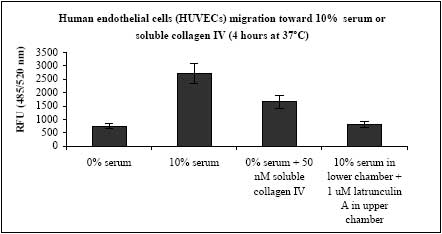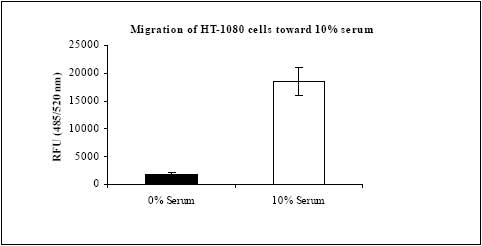CBA010 Sigma-AldrichInnoCyte™ Cell Migration Assay, 96-well
Recommended Products
Overview
| Replacement Information |
|---|
Key Spec Table
| Detection Methods |
|---|
| Fluorometric |
| Product Information | |
|---|---|
| Detection method | Fluorometric |
| Form | 96 Tests |
| Format | 96-well plate |
| Kit contains | Sterile 96-Well Migration Chamber, Culture Tray, Cell Detachment Buffer, Fluorescent Dye, Latrunculin A (inhibitor), and a user protocol. |
| Quality Level | MQ100 |
| Applications | |
|---|---|
| Application References | Loberg, R.D., et al. 2006. Neoplasia 8, 578. |
| Biological Information | |
|---|---|
| Assay time | 3-5 h |
| Sample Type | Adherent cells |
| Physicochemical Information |
|---|
| Dimensions |
|---|
| Materials Information |
|---|
| Toxicological Information |
|---|
| Safety Information according to GHS |
|---|
| Safety Information |
|---|
| Packaging Information |
|---|
| Transport Information |
|---|
| Supplemental Information | |
|---|---|
| Kit contains | Sterile 96-Well Migration Chamber, Culture Tray, Cell Detachment Buffer, Fluorescent Dye, Latrunculin A (inhibitor), and a user protocol. |
| Specifications |
|---|
| Global Trade Item Number | |
|---|---|
| Catalogue Number | GTIN |
| CBA010 | 0 |
Documentation
InnoCyte™ Cell Migration Assay, 96-well SDS
| Title |
|---|
InnoCyte™ Cell Migration Assay, 96-well Certificates of Analysis
| Title | Lot Number |
|---|---|
| CBA010 |
References
| Reference overview |
|---|
| Klinghoffer, R.A., et al. 1999. EMBO J. 18, 2459. Sieg, D.J., et al. 1999. J. Cell Sci. 112, 2677. Smilenov, L. B., et al. 1999. Science 286, 1172. Burridge, K., et al. 1997. Trends Cell Biol. 7, 342. Huttenlocher, A., et al. 1997. J. Biol. Chem. 272, 32719. Lauffenburger, D.A., and Horowitz, A.F. 1996. Cell 84, 359. |
Brochure
| Title |
|---|
| Kit SourceBook - 2nd Edition EURO |
| Kits SourceBook - 2nd Edition GBP |
Citations
| Title | |
|---|---|
|








